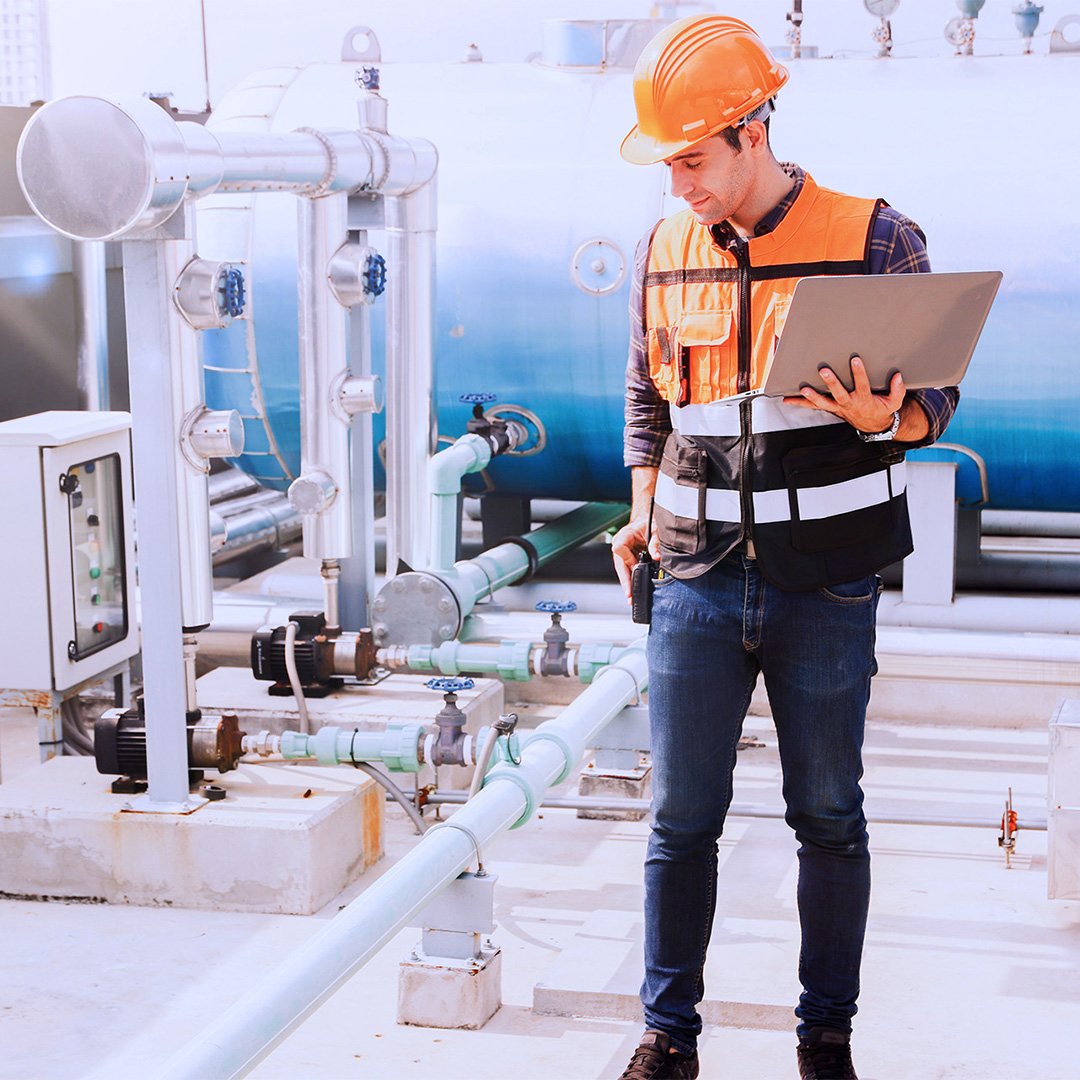How to Detect a Leak in HVAC/R: Refrigerant Leak Detection Systems and Solutions
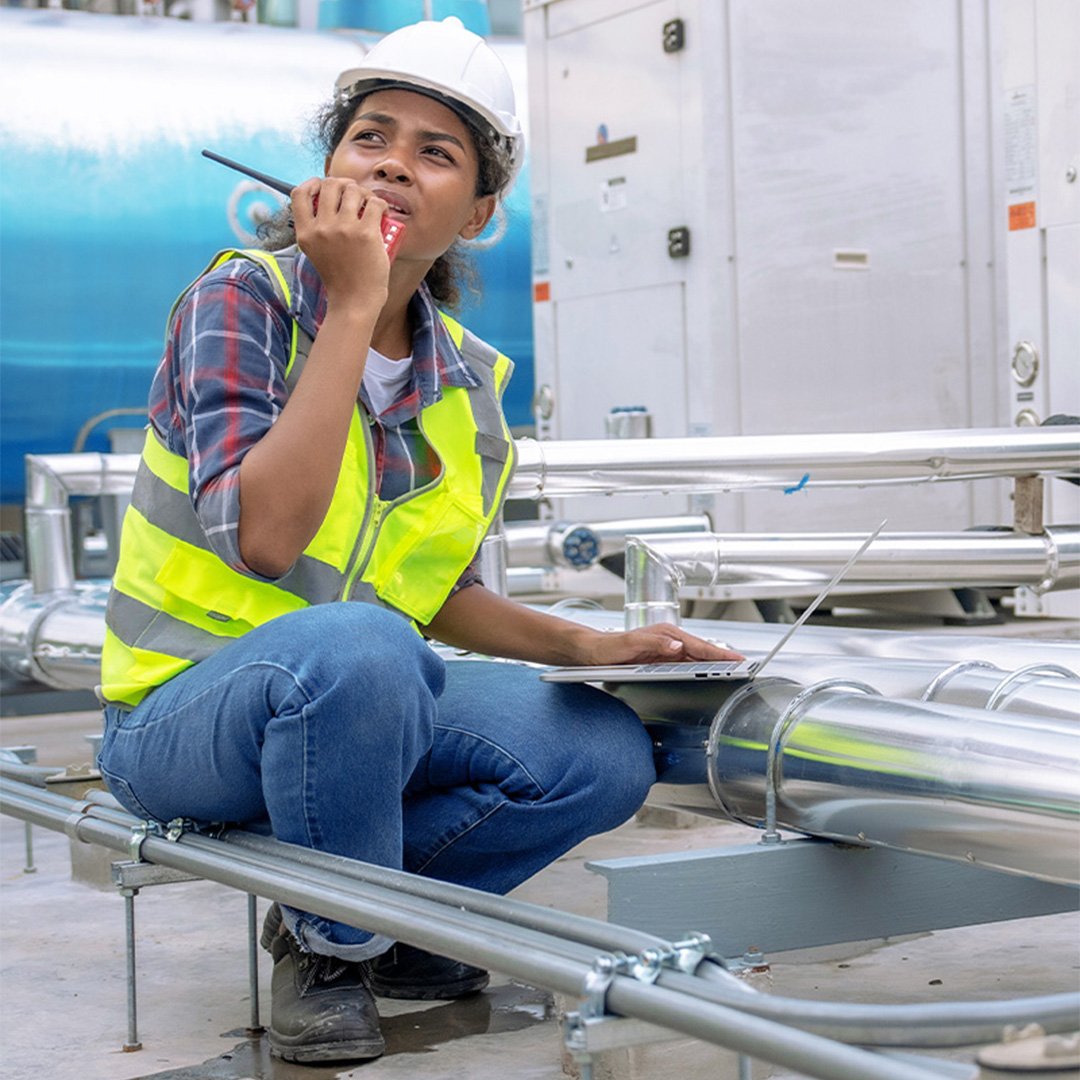
Missed refrigerant leaks create trust gaps in addition to these inefficiencies. When data is incomplete, alerts are missed, or responses are delayed, teams lose confidence in their tools, systems, and even each other.
For these reasons, proactive refrigerant leak detection is a strategic advantage rather than just a maintenance upgrade. Facilities that detect refrigerant leaks early gain critical visibility into potential problems, so they can act before damage is done, downtime is triggered, or regulations are violated.
At Carbon Connector, we call this critical moment the Zero Hour Edge™—the point just before a leak becomes a crisis. It's not when systems fail; it's the window right before, when impact is still limited, and insight can drive meaningful intervention.
With the right tools and data, this edge becomes your operational advantage.This guide is designed to help you take full advantage of that moment. Inside, you’ll learn:
- Why refrigerant leak detection plays a critical role in refrigerant management
- What refrigerant leak detection tools and technologies are available today
- What to look for in a reliable, scalable refrigerant leak detection system
- How smart refrigeration tracking supports compliance and efficiency
- How Carbon Connector brings these elements together into one integrated, full-service solution
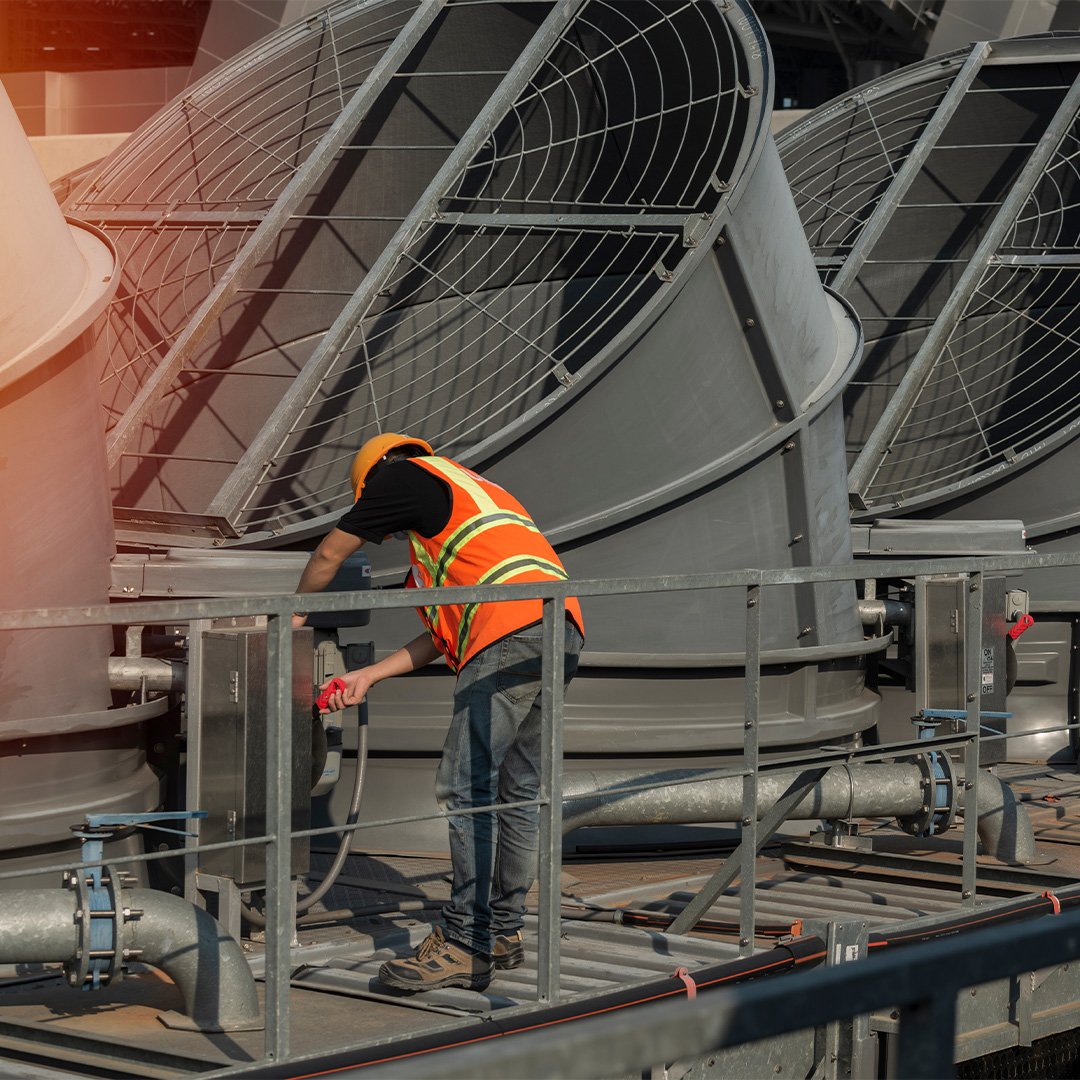
Why Does Proactive Refrigerant Leak Detection Matter?
The ability to detect a leak early can significantly reduce its impact, whether that’s mitigating equipment downtime or compliance risk. A modern refrigerant leak detection system goes beyond alerts. It provides the visibility and control needed to stay ahead of failures and reduce long-term impact.
Here’s where early action makes the biggest difference:
Staying Ahead of Regulatory Compliance
Facilities today face growing compliance pressure under federal and state programs like the AIM act, EPA 608, CARB compliance, and emerging refrigerant regulations in New York and Washington. These frameworks penalize leaks, late detection, missing records, and inaction.
A proactive approach to refrigerant loss prevention helps you meet reporting deadlines and stay audit-ready. The right system will detect a leak before it crosses critical thresholds and provide the documentation needed to satisfy inspectors and internal ESG reporting goals.
After-Hours Failures and Product Losses
Most serious losses occur after hours, when buildings are quiet and no one’s watching. Without 24/7 leak detection, a minor issue discovered Monday morning could already have caused significant product spoilage, energy waste, or food safety violations.
An intelligent system doesn’t clock out. It provides real-time monitoring and alerting, so your team is always one step ahead, regardless of the hour.
Fewer Truck Rolls and Reduced Team Stress
Today’s technicians are under pressure. Inaccurate sensors, vague alerts, and false positives waste time and lead to unnecessary truck rolls. A modern system that integrates HVAC leak detection tools with smart analytics reduces noise and ensures that your team is only dispatched when and where it truly matters.
Environmental and Operational Impact
Refrigerant leaks are among the most preventable contributors to high-GWP emissions. Addressing them through proactive leak detection not only supports refrigerant loss prevention but also aligns with climate and ESG commitments.
Modern systems combine real-time data, intelligent diagnostics, and refrigeration tracking to identify abnormal trends before emissions occur, giving facilities a more innovative, sustainable way to manage their HVAC infrastructure.
Aligning Around Industry Standards
Refrigerant leak detection plays a critical role in meeting today’s HVAC/R standards. ASHRAE Guideline 36 promotes efficiency and consistency by requiring real-time, actionable data to verify system performance and catch issues early. OSHA regulations focus on protecting worker safety through proper monitoring, ventilation, and timely leak response. Aligning around these standards helps facilities maintain compliance, reduce operational risk, and extend the life of HVAC systems.
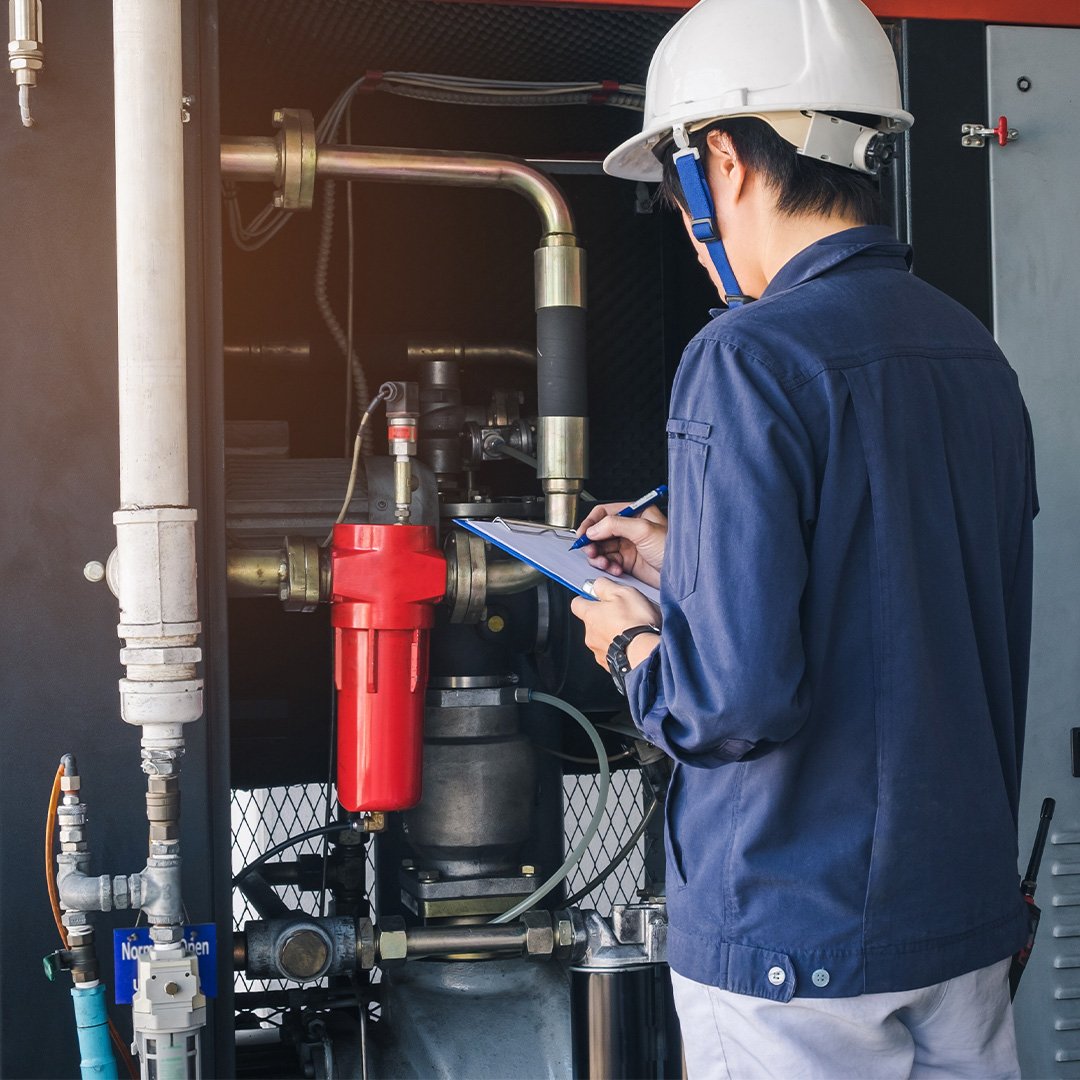
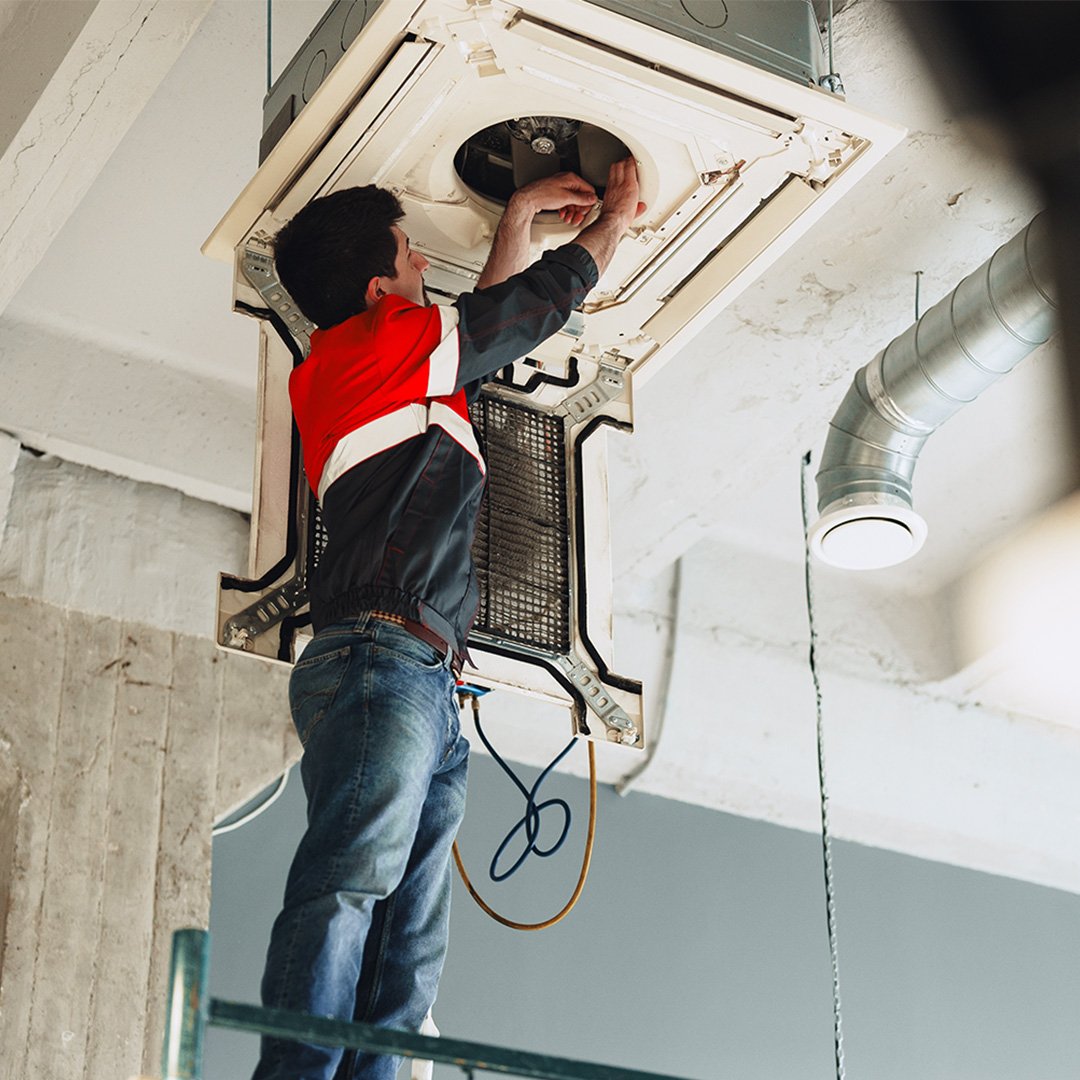
The Anatomy of a Refrigerant Leak: Where and Why They Happen
Refrigerant leaks can affect a wide range of systems and industries, including:
- Refrigeration systems (grocery, food storage, cold chain logistics)
- HVAC systems in commercial buildings, healthcare, and hospitality
- Industrial and manufacturing equipment, where process cooling is critical
Each environment has unique risks, but all benefit from reliable, real-time monitoring.
Refrigerant leaks often develop at mechanical connection points or components under constant pressure, vibration, or thermal stress. Familiar leak sources include:
- Coils: Both evaporator and condenser coils are prone to leaks due to corrosion, vibration, and microscopic fractures in the tubing or fins
- Compressors: Seals and gaskets degrade over time from wear, vibration, and temperature swings
- Brazed joints: Poor brazing or thermal cycling can lead to small cracks and pinhole leaks
- Valves and service ports: Frequent servicing increases the risk of loosening or seal failure
- Pipe fittings and connections: Vibration and expansion gradually weaken joints, making them vulnerable to leaks
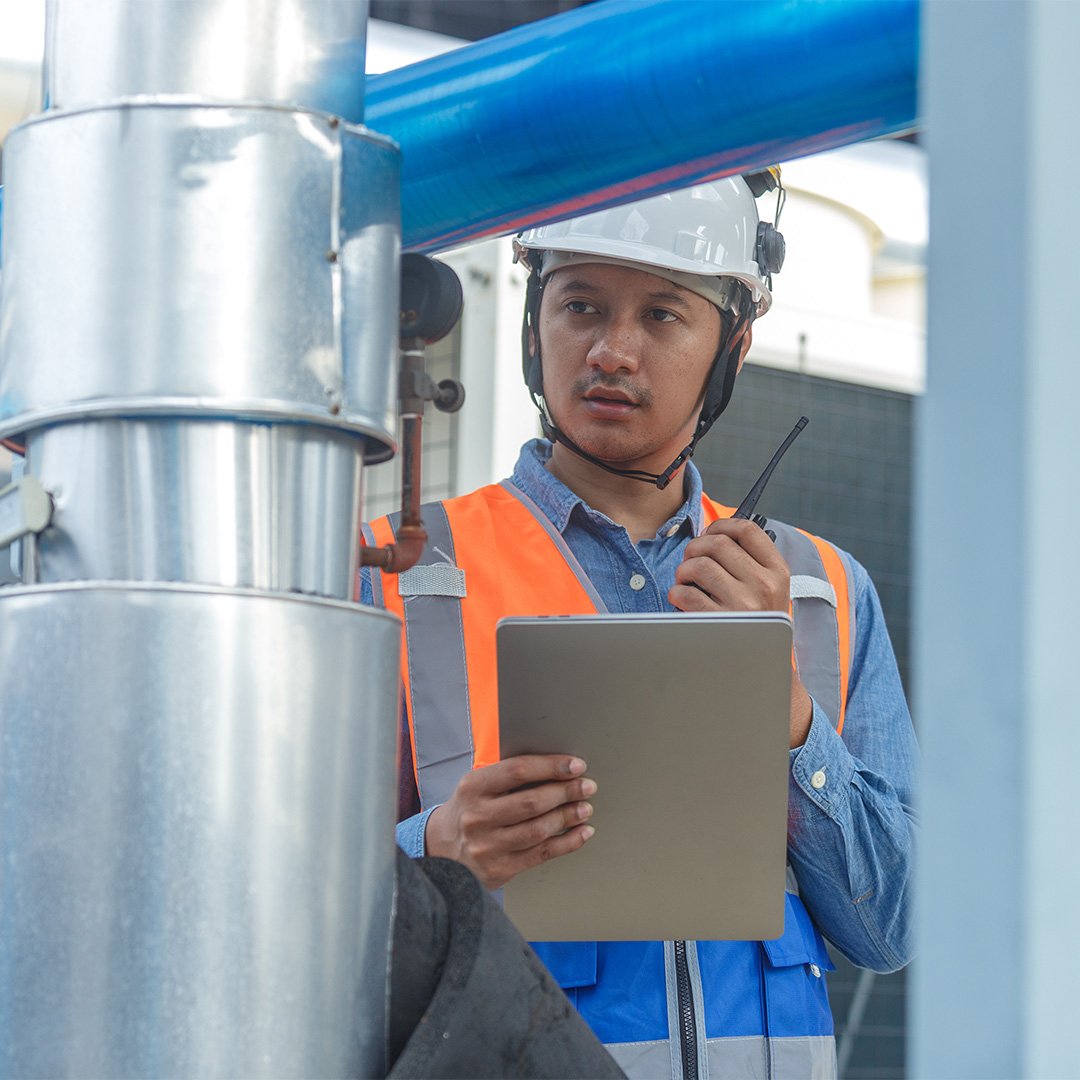
Effective leak detection starts by monitoring these high-risk areas before a small leak becomes a system-wide problem.
Understanding Refrigerant Leak Detection Systems
A refrigerant leak detection system is a combination of tools and technologies used to identify and locate unintended releases of refrigerant gases in HVAC and refrigeration systems.
There are two primary types of leak detection:

Handheld Refrigerant Leak Detectors
Fixed Refrigerant Leak Detection Systems
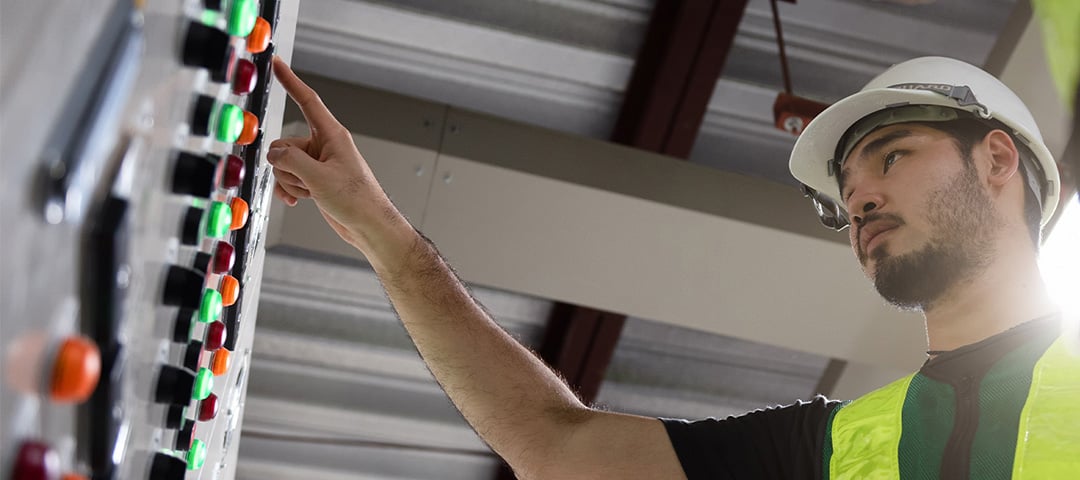
Direct vs. Indirect Refrigerant Leak Detection
In addition to the types of tools used, leak detection methods fall into two core categories: direct and indirect.
While indirect leak detection methods bring depth and early insight, they are most effective when layered with direct detection. Together, these approaches form the core of a modern refrigerant leak detection system that shifts leak management from reactive guesswork to data-driven decision-making.
Carbon Connector’s fixed refrigerant leak detection system combines direct and indirect leak detection. We start with precise, fixed-point sensors and enhance them with intelligent analytics. The result is a proactive leak detection strategy that improves visibility, reduces false alarms, and gives your team the information to respond confidently.
Refrigerant Leak Detection Tools: Building a Smarter Strategy
Finding and addressing leaks efficiently requires the right tools and the right approach. From portable devices to intelligent monitoring systems, today's HVAC leak detection tools offer a range of options depending on your system size and risk profile.
1. Refrigerant Leak Detectors: The First Line of Detection
Handheld Tools
Fixed Leak Detection Sensors
2. Smart and Automated Systems: Intelligence at Scale
The most advanced refrigerant leak detection systems combine sensor hardware with real-time data analytics, remote visibility, and predictive capabilities. These solutions do more than detect—they transform fragmented signals into actionable insights.
Modern smart systems integrate:We combine the precision of fixed sensor hardware with intelligent software and predictive analytics. Our systems help facility teams detect leaks early, prioritize responses, and act confidently 24/7, not just during service hours.
Choosing the Right Leak Detection Tool
There’s no one-size-fits-all tool for leak detection, and relying on a single method is no longer enough.
Portable sniffers can identify a problem in the moment, but they depend on availability and timing. Fixed sensors catch leaks when installed correctly, but only if the data is interpreted in context. Reporting tools provide documentation, but they can't detect anything independently. And analytics without accurate data? That just leads to confusion.
Effective leak detection doesn't come from any single device, technology, or tactic. It comes from how those elements work together. Facilities today need a solution that can:
- Detect small leaks early before they escalate
- Interpret and understand system behavior
- Connect data to assets and actions, so nothing gets lost or overlooked
If your current approach is disjointed: separate vendors for sensors, software, and service, or reactive, where teams only respond after performance drops, it’s time to reevaluate.
In the next section, we’ll show how Carbon Connector combines these components to turn disconnected tools into a unified leak detection strategy that supports drives continuous operational improvement and promotes trust among team members.Carbon Connector’s Three-Layer Approach to Refrigerant Leak Detection
At Carbon Connector, we deliver Leak Detection as a Service (LDaaS)—a harmonized solution designed to give facilities the equipment and support they need to act early. Built on the three strategic pillars of sensor precision, behavioral analytics, and data interpretation and support, our system transforms passive monitoring into proactive control. Each layer is designed to close critical trust gaps in traditional leak detection: unreliable sensors, disconnected data, and unclear response paths.
This is how you gain the Zero Hour Edge™, the critical window where insight, timing, and response align.
1. Sensor Precision – AKO NDIR Sensors
Leak detection starts with the sensor, but not all sensors are equal. We deploy high-sensitivity AKO NDIR detectors, engineered for accuracy and reliability. AKO NDIR sensors can detect leaks with over 95% accuracy to minimize false positives and capture early signs of refrigerant loss.
Unlike basic detectors that trigger unreliable alerts, the AKO NDIR detector filters out false positives and gives your team reliable, actionable information. It performs consistently across rooftops, racks, and cold storage areas, and works in tough environments without constant recalibration.
Just as importantly, we don’t stop at installation. Our team guides:
- Strategic placement to maximize coverage along airflow paths and leak-prone components.
- Routine calibration protocols are used to maintain sensor integrity over time.
- Proactive performance documentation to combat false positives and sensor drift by meticulously logging and tracking detector performance.
- Usage tracking and confidence scores to ensure detectors remain trusted by technicians.
The result is dependable detection you can trust. No more guesswork, false alarms, or chasing symptoms without a verified source.
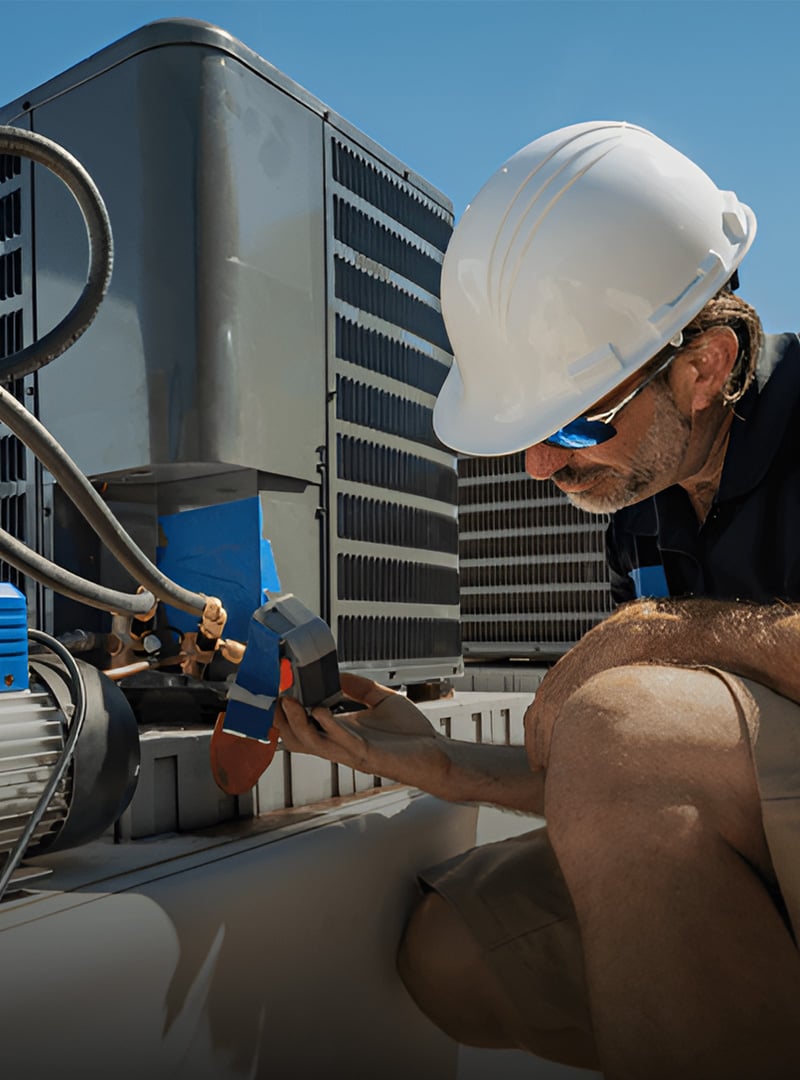

2. Behavioral Analytics – From Signal to Story
Sensors provide the signal, but it’s what you do with the data that drives action. Our analytics layer contextualizes refrigerant behavior through patterns in runtime drift, charge variation, pressure changes, and defrost cycles. This allows us to identify leaks that occur intermittently or only under specific conditions.
With AKONet Cloud, you gain continuous access to this insight remotely. The platform makes it easy to visualize trends, validate alerts, and understand how leaks evolve over time, without needing to be on site. That means fewer blind spots, fewer unnecessary dispatches, and better technician targeting, leading to higher first-time fix rates.
Through predictive diagnostics and historical tracking, AKOcloud empowers teams to move from reactive service to strategic prevention. Every alert is backed by data, and every data point helps tell a clearer story about your system’s health.3. Coordinated Response – From Alert to Action
Even the best detection data is only valuable if the right action follows. Our third layer bridges the gap between insight and execution with expert triage, contextual alerts, and smart escalation protocols.
We support your team in building a response strategy that equips the right people with the right information at the right time:
- Subject matter experts review and interpret alerts before any dispatch decisions are made.
- Technicians receive system history, leak profiles, and service context before they arrive on site.
- Your platform prioritizes alerts based on severity and operational impact.
- Every response is logged, verified, and fed back into the system to create a continuous improvement loop that sharpens future performance.
This last layer of Carbon Connector’s holistic leak detection model represents a continuous improvement cycle, where each detection event strengthens your overall strategy and eliminates the fragmentation that causes inefficiency, waste, and compliance gaps.

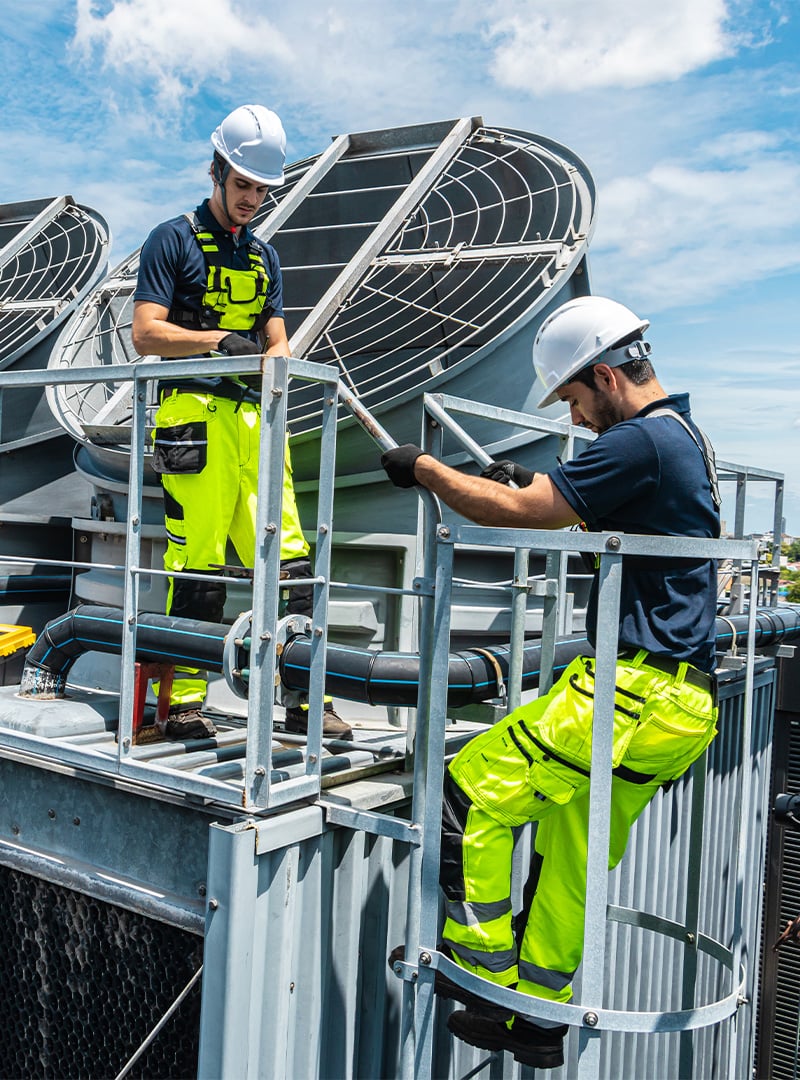
What You Get: A Confident, Connected Response Strategy
With Carbon Connector and AKO, leak detection expands beyond a technical function into a coordinated, intelligent process. You gain:
- Confidence in your detection infrastructure
- Early warnings backed by behavioral context
- Smarter, faster, and more accountable responses
- Stronger alignment with EPA 608, CARB, and ESG compliance requirements
- A system that doesn’t just detect leaks—it learns from them
Explore our holistic leak detection model and experience the Zero Hour Edge™ in action. You’ll gain a human-centric, data-informed strategy that transforms your leak detection process from fragmented and reactive into seamless and strategic.
Case Study: Smarter Placement, Smarter Response at Harris Teeter
At Harris Teeter, refrigerant leak detectors were originally installed near delivery doors in an area prone to poor airflow and periodic CO₂ interference. While the intent was to monitor potential leaks in a high-traffic zone, the result was a flood of false alarms that led to unnecessary truck rolls and disrupted maintenance workflows.
With Carbon Connector’s guidance, the sensors were strategically repositioned inside the refrigerated cases, where airflow was more stable and signal integrity could be optimized. The system was tuned using AKO’s sensors integrated with intelligent leak detection software. It monitored behavioral indicators linked to real leak events, such as pressure drifts and runtime anomalies.
The Results:
- 60% increase in leak detection accuracy
- 40% reduction in unnecessary service visits
- Fewer distractions for technicians, clearer data for compliance, and better overall system performance
This case highlights what happens when you combine precise sensor placement with smart analytics and an understanding of the best course of action. Harris Teeter gained clearer signals, fewer “ghost leaks", and a team that knows exactly when and where to act.
Proactive leak detection doesn't have to be complex. With Carbon Connector, implementation is straightforward, and support doesn’t stop once you're up and running.Easy Onboarding, Built for Your Team
We’ve streamlined the process so your team can get results quickly:
- Consultation – We review your systems, risk areas, and compliance needs.
- Sensor Strategy & Installation – We guide optimal AKO sensor placement with simple, wireless deployment.
- Platform Integration – We connect your system to Carbon Connector's analytics and monitoring dashboard.
- Training & Go-Live – We onboard your team, configure alerts, and help your team stay aligned.
Ongoing Support You Can Count On
From system tuning to data interpretation, we’re with you every step of the way. Our team provides:
- Continuous monitoring of leak detector performance
- Expert-guided insight and analytics tuning
- Responsive troubleshooting and regular optimization
- Training refreshers as your team or systems evolve
Take the Next Step Toward Smarter Refrigerant Management
Refrigerant leaks may start small, but their consequences compound quickly. They impact energy efficiency, operations, compliance, and facility teams. Traditional leak detection methods often miss the critical early signs, leading to unnecessary downtime and missed regulatory deadlines.
That’s where Carbon Connector comes in. Our holistic Leak Detection as a Service (LDaaS) model combines sensor precision, behavioral analytics, and traceable asset intelligence into a single, integrated solution. We help you detect with confidence and respond with clarity, without missing any documentation steps.
With our support, your team gains the Zero Hour Edge™ and the ability to act before small issues escalate to stay ahead of regulations and system failures. It’s not just about monitoring. It’s about transforming insight into action and action into results.Leak Detection FAQs
1. Why is refrigerant leak detection so important?
Because refrigerants are both expensive and environmentally harmful, even small leaks can lead to significant energy losses and violations. Early detection helps prevent operational disruptions and supports EPA 608 and CARB compliance.
2. What are the most common signs of a refrigerant leak?
Common indicators include reduced cooling performance, longer system runtimes, ice buildup on coils, hissing sounds near refrigerant lines, and unexplained increases in energy bills.
3. How often should systems be checked for leaks?
Leak check frequency depends on system size, refrigerant charge, and compliance requirements. High-charge systems often require quarterly or annual inspections, but fixed leak detection systems provide 24/7 monitoring for maximum protection.
4. What are the different types of leak detection methods?
Leak detection methods include direct tools (like handheld sniffers, infrared and ultrasonic sensors), fixed systems (such as NDIR detectors), and indirect methods that analyze system behavior for leak-related anomalies.
5. What’s the difference between direct and indirect leak detection?
Direct detection uses sensors to identify the physical presence of refrigerant gas. Indirect detection analyzes changes in system behavior (like pressure or runtime anomalies) to infer a possible leak. Together, they provide the most complete and proactive detection strategy.
